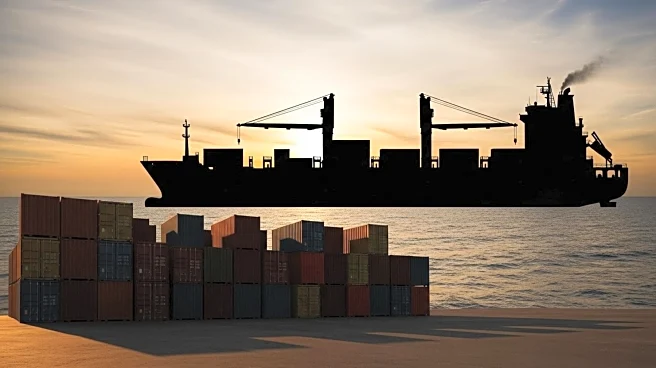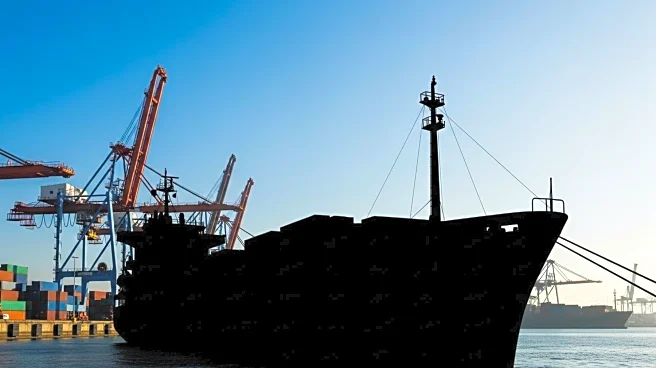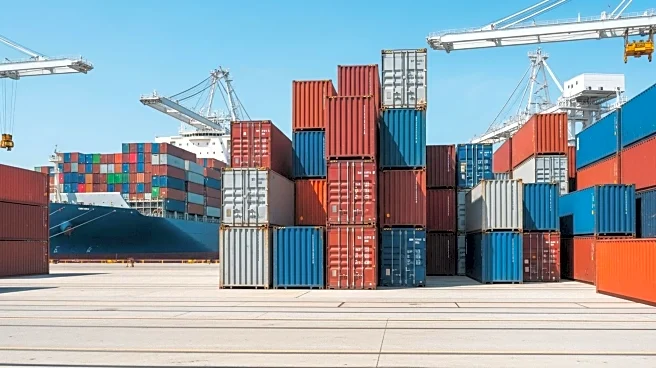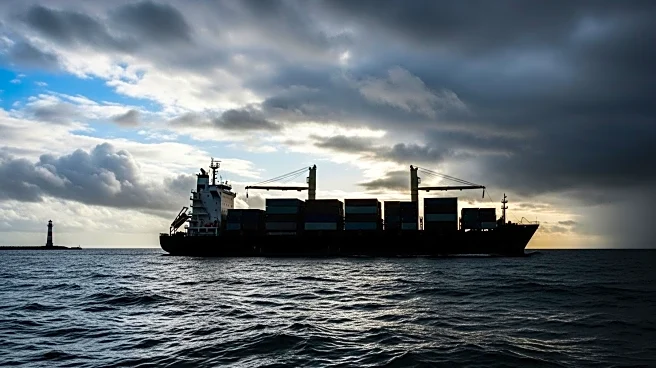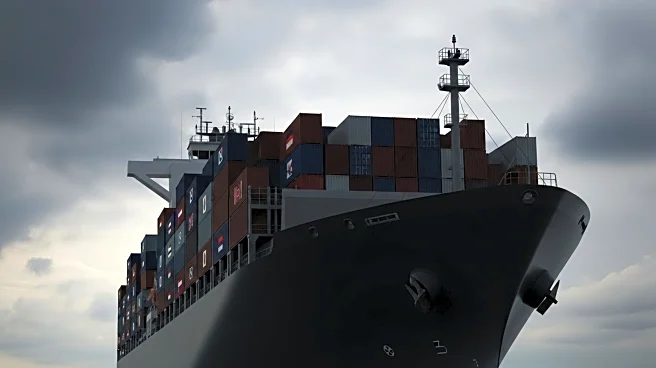What is the story about?
What's Happening?
The United States Trade Representative (USTR) has proposed modifications to the Section 301 fee program, which is set to launch for Chinese-owned, operated, or built ships. These changes are in response to comments on the program, particularly affecting the car carrier segment and port equipment. The USTR plans to increase fees from $14 to $46 per net ton for foreign-built vehicle carriers, aiming to address concerns that previous fees were insufficient to counteract China's policies. Additionally, tariffs on cargo handling equipment, such as rubber tire gantry cranes, will see increases up to 150 percent, pushing for reshoring of manufacturing despite port complaints about limited expansion options. Exemptions for certain ethane and liquified petroleum gas carriers are proposed, while exemptions for Chinese-built 'Lakers' are removed. The USTR also plans to expire certain provisions by April 18, 2029, unless renewed.
Why It's Important?
These proposed changes by the USTR are significant as they reflect ongoing trade tensions between the U.S. and China, particularly in the maritime sector. The increased fees and tariffs are part of a broader strategy to encourage domestic manufacturing and reduce reliance on Chinese imports. This could impact U.S. ports and shipping companies, potentially increasing operational costs and affecting international trade dynamics. The reciprocal program announced by China for U.S.-owned or flagged vessels further complicates the situation, indicating potential retaliatory measures that could affect bilateral trade relations. Stakeholders in the shipping and port industries may face challenges in adapting to these new regulations, which could influence global supply chains and economic interactions.
What's Next?
The proposed changes have opened a new comment period running through November 12, allowing stakeholders to provide feedback. As lawyers review the details within the 32 memoranda, further comments and complaints are expected, potentially leading to adjustments in the proposals. The reciprocal program by China, set to launch next week, may prompt additional diplomatic negotiations or trade discussions. The expiration of certain provisions by 2029 suggests ongoing monitoring and potential future revisions based on industry feedback and geopolitical developments. Stakeholders will need to stay informed and engaged in the process to mitigate potential impacts on their operations.
Beyond the Headlines
The USTR's actions highlight the complex interplay between trade policy and national security, as the U.S. seeks to bolster its maritime capabilities while addressing foreign competition. The emphasis on reshoring manufacturing aligns with broader economic strategies to strengthen domestic industries. However, the increased tariffs could strain port operations and logistics, necessitating innovative solutions to maintain efficiency. The legal and diplomatic dimensions of these changes underscore the importance of international cooperation and negotiation in resolving trade disputes. Long-term shifts in global trade patterns may emerge as countries adapt to new regulatory landscapes.
AI Generated Content
Do you find this article useful?
